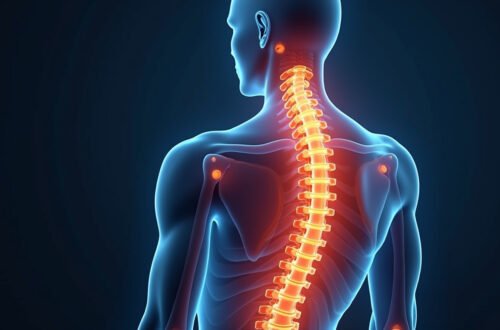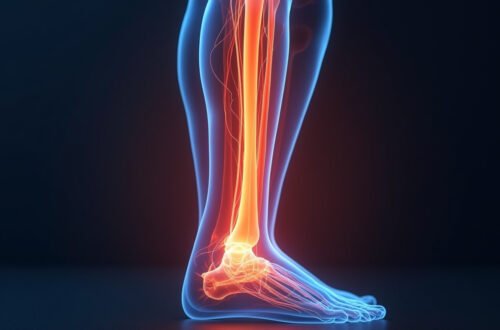Living with nerve pain can be a daily challenge, restricting movement and diminishing quality of life. Fortunately, nerve gliding exercises offer a natural and effective way to reduce nerve discomfort while improving mobility. These targeted movements help nerve tissues move smoothly through surrounding structures, easing tension and preventing irritation. In this article, we will explore what nerve gliding exercises are, their benefits, how to perform them, and tips to incorporate them safely into your routine.
What Are Nerve Gliding Exercises?
Nerve gliding exercises, also known as nerve flossing or neural mobilization, involve gentle movements designed to stretch and mobilize the nerves. Unlike standard stretching aimed at muscles, nerve glides focus on moving the nerves within their anatomical pathways. This helps prevent nerves from becoming compressed or adhered to surrounding tissues.
The nerves, just like muscles or tendons, need to move freely to function properly. When nerves get trapped or compressed due to injury, inflammation, or repetitive motions, pain and limited mobility can result. Nerve gliding exercises help restore natural nerve movement and reduce symptoms such as tingling, numbness, and radiating pain.
Benefits of Nerve Gliding Exercises
Engaging in nerve gliding exercises regularly can yield numerous advantages:
- Reduced Nerve Pain: Gentle nerve movement decreases irritation and inflammation often found in conditions like sciatica or carpal tunnel syndrome.
- Improved Range of Motion: By enhancing nerve mobility, patients often experience decreased stiffness and improved joint flexibility.
- Prevention of Nerve Adhesions: These exercises minimize the risk of scar tissue or adhesions trapping nerves after injuries or surgeries.
- Enhanced Nerve Health: Stimulating nerves through movement promotes blood flow and nutrient delivery essential for repair.
- Non-invasive and Drug-free Treatment: Nerve gliding exercises provide relief without reliance on medications or invasive procedures.
According to the American Physical Therapy Association, nerve mobilization techniques can be effective in managing nerve-related pain and functional limitations (source).
Common Conditions Treated with Nerve Gliding Exercises
Nerve gliding exercises are frequently recommended for several common nerve-related issues, including:
- Carpal Tunnel Syndrome: Compression of the median nerve at the wrist causing hand numbness and pain.
- Sciatica: Irritation of the sciatic nerve leading to radiating leg pain or numbness.
- Cubital Tunnel Syndrome: Ulnar nerve compression at the elbow that causes tingling in the ring and little fingers.
- Thoracic Outlet Syndrome: Nerve compression at the neck and shoulder producing arm pain or weakness.
- Radial Nerve Entrapment: Compression causing wrist drop and forearm pain.
Incorporating nerve gliding exercises as part of a comprehensive treatment approach can reduce symptoms and improve function.
How to Perform Nerve Gliding Exercises Safely
Before beginning any new exercise regimen, especially if you suffer from chronic pain or a medical condition, consult with a healthcare professional or physical therapist to ensure these exercises are appropriate for you.
Below is a general guideline to help you safely perform nerve gliding exercises:
- Start Slowly: Begin with gentle movements targeting the affected nerve distribution.
- Maintain Proper Posture: Ensure joints and limbs are positioned correctly to maximize nerve glide without overstretching.
- Avoid Painful Movements: Mild tension is acceptable, but stop immediately if sharp or worsening pain occurs.
- Use Controlled Repetitions: Perform 5-10 repetitions of each exercise, moving slowly and deliberately.
- Breathe Normally: Relax and maintain normal breathing throughout the exercise session.
- Progress Gradually: Increase intensity or repetitions only as comfort allows.
Examples of Nerve Gliding Exercises
Here are some commonly practiced nerve gliding exercises targeting various nerves in the body.
Median Nerve Glide (For Carpal Tunnel Syndrome)
- Extend your arm straight out to the side with the palm facing up.
- Gently bend your wrist backward, extending your fingers.
- Slowly tilt your head away from the arm to add light stretch.
- Return to the starting position.
- Repeat 5-10 times.
Sciatic Nerve Glide (For Sciatica)
- Lie flat on your back.
- Slowly raise the affected leg straight up, keeping the knee extended.
- When mild tension is felt, slightly flex and point your ankle.
- Lower the leg gently.
- Repeat 5-10 times.
Ulnar Nerve Glide (For Cubital Tunnel Syndrome)
- Start with your arm bent at the elbow, palm facing your face.
- Gradually straighten your elbow while tilting your head away from the arm.
- Return to start.
- Repeat 5-10 times.
These exercises are effective at relieving nerve tension while gently mobilizing the nerve to prevent further entrapment.

Tips for Maximizing the Effectiveness of Nerve Gliding Exercises
Implementing these strategies can enhance the benefits of your nerve gliding routine:
- Combine with Stretching and Strengthening: Balancing nerve exercises with muscle stretches and strengthening promotes overall joint health.
- Stay Consistent: Perform nerve gliding exercises daily or as advised by your healthcare provider.
- Use Heat Therapy: Applying warm compresses prior to exercises can relax muscles and improve nerve mobility.
- Listen to Your Body: Modify or pause exercises when discomfort or pain worsens.
- Maintain Ergonomic Habits: Avoid positions and repetitive motions that may aggravate nerve compression outside exercise time.
Frequently Asked Questions (FAQ)
Q1: How soon can I expect relief from nerve pain after starting nerve gliding exercises?
A1: Many people notice improvement within a few days to weeks of consistent practice. However, results vary based on the severity of the nerve issue and adherence to the exercises.
Q2: Can nerve gliding exercises be done at home without supervision?
A2: Yes, once properly instructed by a healthcare professional. It is important to learn correct technique initially to avoid exacerbating symptoms.
Q3: Are there any risks or side effects of nerve gliding exercises?
A3: When performed correctly, the risk is low. Overstretching or performing exercises too aggressively may cause increased pain or irritation, so it’s essential to progress slowly and consult your therapist.
Conclusion: Take Control of Your Nerve Pain Today
Nerve gliding exercises provide a simple, drug-free approach to alleviating nerve pain and restoring mobility. By gently mobilizing the nerves, these movements reduce irritation, prevent adhesions, and enhance functional recovery. Whether dealing with carpal tunnel syndrome, sciatica, or other nerve-related conditions, incorporating nerve gliding exercises into your daily routine can accelerate healing and improve your quality of life.
If you struggle with nerve pain or restricted movement, don’t wait—consult a physical therapist or healthcare provider to learn the proper exercises tailored for your needs. Start your journey toward relief and renewed mobility today with nerve gliding exercises!
For further reading and expert guidance, check resources from the American Physical Therapy Association here.





